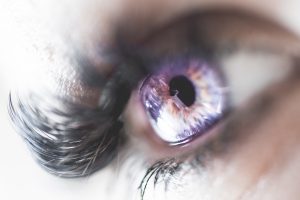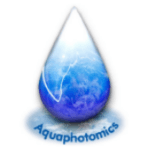水と物質の相互作用に関する研究により、ぬれ性や生体適合性などの非常にとらえどころのない特性の理解に素晴らしい展望が訪れる可能性があります。
最近の多くの研究が指摘しているように、水の構造はポリマ―の生体適合性にとって重要であると認識されています(Tanaka, Hayashi, and Morita 2013, Morita, Tanaka, and Ozaki 2007, Morita et al. 2010)。 これらの研究は、EMスペクトルという窓から覗き込むことで水の構造と機能の関係が明らかになるということの優れた例です。

最近のアクアフォトミクス材料研究として、ソフトコンタクトレンズのハイドロゲル素材に含まれる水の状態の調査があります(Munćan, Mileusnić, ŠakotaRosić, et al. 2016, ŠakotaRosić, et al. 2016)。 ポリマーネットワークの状態、使用済みコンタクトレンズ表面のタンパク質沈着、そして初めてレンズが生体内に最も類似した条件で水和されている状態を明らかにしました。 さらに、これらの研究は完全に非破壊的な方法で水と親水性材料を同時に調査するための共通のプラットフォームを提供します。
アクアフォトミクスは、フラーレンベースナノ素材などの調査にも挑戦し、非常に低濃度で水を構造化させる要素として作用することを明らかにしました(Matija et al. 2012, Matija et al. 2013)。 この発見により、これらの素材がもつ優れた抗酸化特性および放射線防護特性に関するいくつかの特異な調査結果を説明できるかもしれません。現在のところ水も重要な役割を果たすという仮説が立てられています。(Andrievsky, et al. 2009)。
他のアクアフォトミクス研究では水溶液中の0 ~ 10.mgL-1 濃度範囲の金属イオン濃度(Tsenkova, Fockenberg, et al. 2007, Putra et al. 2010) および水性懸濁液中のポリスチレン粒子濃度(1%– 0.0001%)(Tsenkova, Iso, et al.2007)の測定に成功しました。
Tanaka, M., T. Hayashi, and S. Morita. 2013. “The roles of water molecules at the biointerface of medical polymers.” Polymer journal 45 (7):701-710.
Morita, S., M. Tanaka, and Y. Ozaki. 2007. “Time-resolved in situ ATR-IR observations of the process of sorption of water into a poly (2-methoxyethyl acrylate) film.” Langmuir 23 (7):3750-3761.
Morita, Shigeaki, Masaru Tanaka, Kuniyuki Kitagawa, and Yukihiro Ozaki. 2010. “Hydration structure of poly (2-methoxyethyl acrylate): comparison with a 2-methoxyethyl acetate model monomer.” Journal of Biomaterials Science, Polymer Edition 21 (14):1925-1935.
Munćan, J., I. Mileusnić, J. Šakota Rosić, A. Vasić-Milovanović, and L. Matija. 2016. “Water properties of soft contact lenses: A comparative near-infrared study of two hydrogel materials.” International Journal of Polymer Science 2016.
Šakota Rosić, J., J. Munćan, I. Mileusnić, B. Kosić, and L. Matija. 2016. “Detection of protein deposits using NIR spectroscopy.” Soft Materials 14 (4):264-271.
Matija, L., R. Tsenkova, M. Miyazaki, K. Banba, and J. Muncan. 2012. “Aquagrams: Water spectral pattern as characterization of hydrogenated nanomaterial.” FME Transactions 40 (2):51-56.
Matija, L., R. Tsenkova, J. Munćan, M. Miyazaki, K. Banba, M. Tomić, and B. Jeftić. 2013. “Fullerene based nanomaterials for biomedical applications: engineering, functionalization and characterization.” Advanced Materials Research.
Andrievsky, Grigory V, Vadim I Bruskov, Artem A Tykhomyrov, and Sergey V Gudkov. 2009. “Peculiarities of the antioxidant and radioprotective effects of hydrated C60 fullerene nanostuctures in vitro and in vivo.” Free radical biology and medicine 47 (6):786-793.
Tsenkova, R, C Fockenberg, N Koseva, A Sakudo, and M Parker. 2007. “Aquaphotomics: water absorbance patterns in NIR range used for detection of metal ions reveal the importance of sample preparation.” 13th international conference on near infrared spectroscopy Umea-Vasa, Sweden & Finland.
Putra, A., F. Faridah, E. Inokuma, and R. Santo. 2010. “Robust spectral model for low metal concentration measurement in aqueous solution reveals the importance of water absorbance bands.” Jurnal Sains dan Teknologi Reaksi 8 (1).
Tsenkova, R., E. Iso, M. Parker, C. Fockenberg, and M. Okubo. 2007. “Aquaphotomics: a NIRS investigation into the perturbation of water spectrum in an aqueous suspension of mesoscopic scale polystyrene spheres.” 13th international conference on near infrared spectroscopy, Umea-Vasa, Sweden & Finland.
